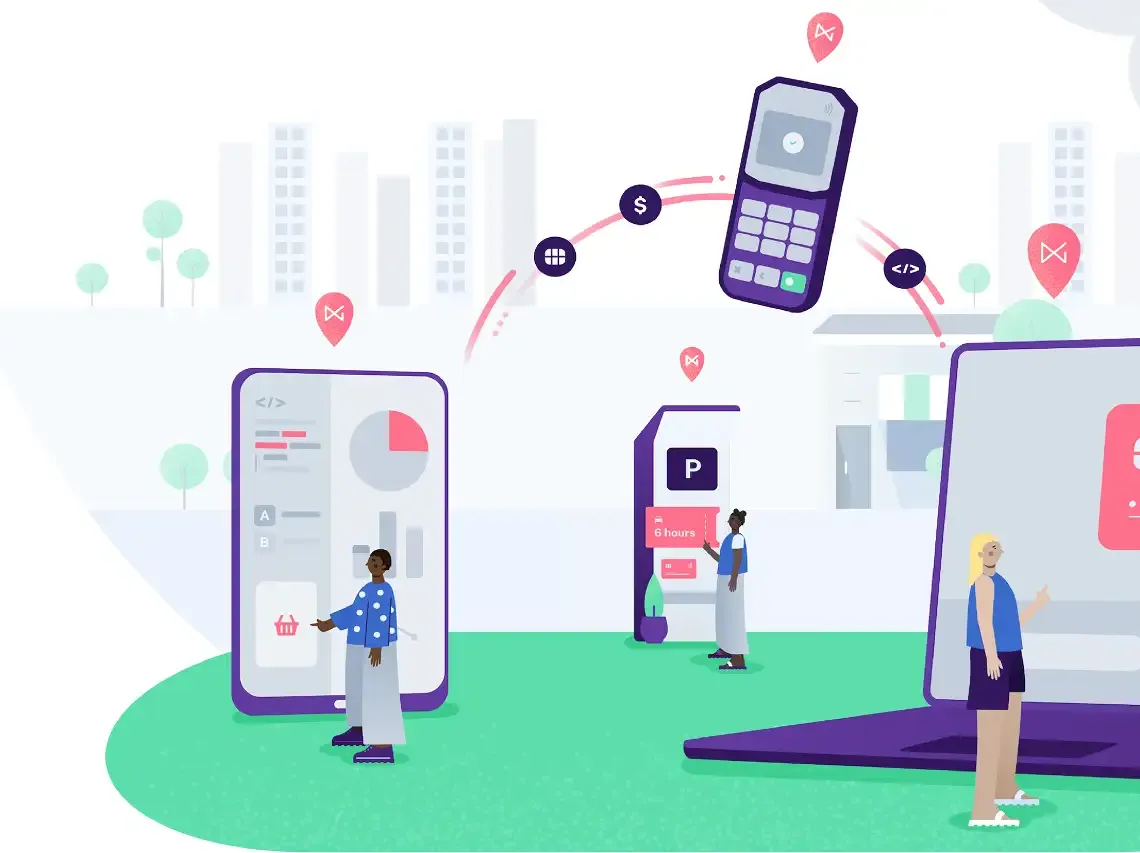Staying on top of the latest Fintech innovations can quickly become a full-time job, which is why it’s crucial to partner with companies that can remove the burden for you. The pandemic only accelerated innovation, making things even more challenging. We’ve pulled together the following predictions and trends to give you an idea of what to expect in 2022.
1. Omnichannel commerce will remain front and center
At one point, the word “omnichannel” was so overhyped that merchants began to tune it out. Once the pandemic started, however, they had to listen. Omnichannel became a reality. Now, merchants need to engage customers on multiple channels, and the omnichannel payment trend doesn’t show signs of decreasing.
Still, for some merchants, especially your small and medium-sized business (SMB) accounts, this isn’t a business model with which they’re comfortable. You can guide your customers through implementing payment solutions that enable payments in-store and on digital channels and show them how to manage all payments from one platform, making life easier for the end customer and the merchant alike.
The data from a single-silo omnichannel payments solution can also provide merchants with insights into customer behaviors, trends, and sales. That information can help develop more effective promotions, guide vendor relationships and merchandising, optimize loyalty rewards and more.
2. ISVs will outgrow Stripe
Stripe has built a solid product and a reputation for easy integration, but it’s designed to provide payment services to a particular type of merchant – and in many cases, it has a short shelf life. Stripe’s one-size-fits-all approach meets most of your users’ needs today, as their business expands and grows, they’ll outgrow Stripe – and possibly the solution you provide, if Stripe is the only payment integration you offer.
In 2021, we were approached by many ISVs looking to partner with a full-service payment company that can provide features such as omnichannel commerce, white labeling, tap to mobile, and more. We expect this trend to continue for the foreseeable future.
3. Tap to Mobile Arrives
Tap-to-mobile technology enables merchants to accept contactless payments directly to an Android smartphone or tablet. It uses near-field communication (NFC) technology and existing, secure EMV payment infrastructure to allow a consumer to tap a contactless card or mobile wallet near the merchant’s device to make a payment. No dongle or payment devices are necessary – that functionality is stored in the cloud.
This is great for micro-merchants who can’t afford a complete POS and payment solution but want to accept credit cards. It’s also great for merchants that need a quick mobile payments solution with no additional investment. Ensure your payment partners can address this burgeoning need or contact NMI to learn about our Tap to Mobile solution.
4. Hardware and processor-agnostic payments become the standard
Rather than locking clients into using specific types of devices and processors, ISVs, ISOs and banks are now looking for agnostic payments partners that give merchants the freedom to choose devices and processors with the features that best support their business needs.
This has always been important, but it’s been underscored during the pandemic by supply chain issues that have resulted in shortages of some payment devices. When you work with a hardware and processor-agnostic payments partner, your clients have more choice and are less likely to have to put their plans on hold to accept payments in new ways because one vendor can’t fill orders and are limited by processor certification. Ideally, you should find a payment partner that supports hundreds of payment devices and leading processors.
5. Competition from fintechs will remain fierce for banks
Fintech disruptors like Square, Stripe and PayPal are in an enviable position. By capturing SMB payment activity at the POS, they gain data on the merchant’s cash flow. Armed with that knowledge, some Fintechs are now entering the banking space and becoming lenders, knowing exactly how much credit to offer. This makes it easy for SMBs to work directly with these nontraditional payment players rather than going to their banks.
To counter this trend, many banks will need to replace their legacy technology stack and embrace software-led payments to take on these fintechs while protecting existing customer relationships.
Next Steps
Your ability to provide the solutions that support payment trends directly depends on your payments partner’s capabilities. You’ll also benefit from a partner that studies trends, innovates, and keeps you up to date. A discussion with the proper payments company can show you what’s hot, where to allocate resources, where to focus sales.
Contact NMI to learn more about 2022 payment trends and how we can help you deliver the solutions your clients need.
Don’t just turn on payments, transform the way you do business
- Generate New Revenue By adding or expanding payment offerings to your solution, you can start earning higher monthly and transaction-based recurring revenue.
- Offer the Power of Choice Allow merchants to choose from 125+ shopping cart integrations and 200+ processor options to streamline their onboarding.
- Seamless White Labeling Make the platform an extension of your brand by adding your logo, colors and customizing your URL.





